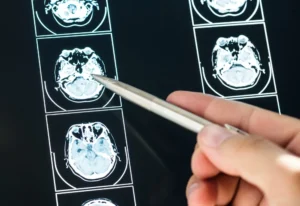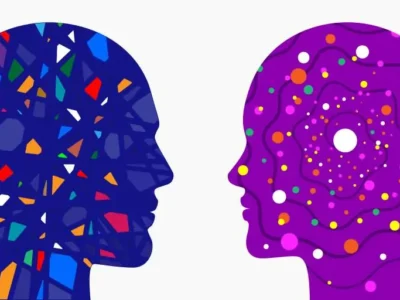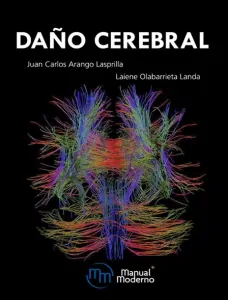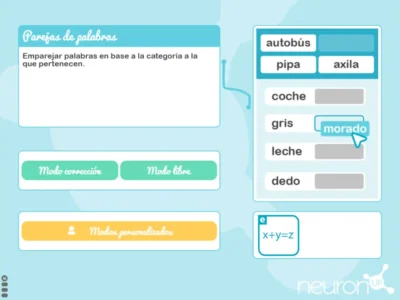Stroke (CVA) has become a true pandemic. The numbers suggest it is one of the leading causes of death worldwide and the main cause of disability in the adult population. This article aims to provide information about what a stroke is, the types of stroke that exist and their possible sequelae.
What is a cerebrovascular accident or stroke (CVA)?
According to the World Health Organization, a cerebrovascular accident (CVA), also called a stroke, is the interruption of blood flow to the brain. It is usually caused by the rupture or obstruction of a vessel that cuts off the supply of oxygen and nutrients, producing brain damage that, transiently or permanently, alters the functioning of one or several areas of the brain.
In recent years its prevalence and mortality have increased; however, the disability generated is greater than the deaths caused by this condition. A high percentage of these cases is preventable, with early intervention on modifiable risk factors. Some risk factors are: age, hypertension (HTN), diabetes mellitus (DM), obesity, transient ischemic attacks (TIAs) and physical inactivity. Among these, age is the most frequent risk factor, with adults over 50 years old being the most vulnerable population. It is followed by hypertension (Carnés-Vendrell, Deus-Yela, Molina-Seguin, Pifarré-Paredero, & Purroy, 2016).
In this regard, there is a group of people with a special predisposition to develop this cardiovascular disease. Therefore, self-care, early diagnosis and appropriate treatment can help prevent stroke and/or reduce the damage caused by the injury.
Types of stroke
Strokes can be divided into two main types, according to the nature of the brain injury:
- Ischemic: occur when an artery becomes blocked and therefore blood does not reach an area of the brain. This is the most common cause, especially in the elderly population. Arteries become blocked or narrowed due to the buildup of blood clots, fatty deposits or other debris that travel through the bloodstream and lodge in the brain’s blood vessels. Depending on their evolution in the first hours it is possible to distinguish whether it is a transient ischemic attack (TIA) or a cerebral infarction. The former does not produce permanent damage, while the latter lasts longer and causes permanent damage.
- Hemorrhagic: occur due to the rupture of a blood vessel in the brain, which causes an accumulation of blood fluid that damages the area of the brain where it occurs. This type of stroke is more common in the young population. Two subtypes can also be found: intracerebral hemorrhage and subarachnoid hemorrhage. Intracerebral hemorrhage, generally associated with hypertension, is responsible for 80% of hemorrhagic strokes. Subarachnoid hemorrhage is usually caused by an aneurysm; it is a much less frequent stroke, most often associated with malformations of the vascular tissue.
According to the Argentine Federation of Cardiology, statistics suggest that ischemic events predominate in our country, representing approximately 85% of cases, while hemorrhagic events make up approximately 15%.
As mentioned above, a stroke can cause temporary or permanent disabilities, which depends, on the one hand, on how long the brain is deprived of blood flow, and on the other, on the brain area affected.
Consequences or sequelae of stroke
One of the possible complications of suffering a stroke is hemiplegia or loss of muscle movement. In these cases, the person will experience paralysis of one side of the body, or they may lose control of certain muscles. In this regard, the ability to swallow may also be affected if the control of the specific mouth and throat muscles is compromised. Likewise, this can cause difficulty speaking.
Cognitive sequelae of stroke
At the cognitive level, language difficulties may appear, aphasia, deficits in communicating through words, facial expression or writing. Also, memory loss, agnosia, apraxia, difficulties in the ability to reason, give opinions and/or understand concepts. Changes in habitual behavior often occur, problems carrying out personal care tasks (Aguilar-Palomino, Olivera-Pueyo, Benabarre-Ciria, & Pelegrín-Valero, 2009). People may become more withdrawn, dependent, needing extra help to maintain their personal and household hygiene. A deficit arises in the performance of basic tasks and activities of daily living.
It can be stated that deterioration mainly affects attention, higher executive functions, and the emergence of neuropsychiatric manifestations such as depression, confusional syndromes, anxiety, psychomotor agitation, psychotic symptoms and/or sleep disorders. Because the primary symptom produced at the neurocognitive level after a stroke is not a memory deficit, the term “vascular dementia” has been questioned and it has been proposed to encompass these sequelae under the concept of “vascular cognitive impairment” (Luna-Matos, Mcgrath, & Gaviria, 2007).

Subscribe
to our
Newsletter
Affective-cognitive complications
Among the possible complications in the affective-cognitive domain, the central role of depression, called post-stroke depression (PSD), in the course of these patients should be highlighted. It presents very similar symptoms to depression without associated neurological disease, although with some differences. Sleep disorders, vegetative symptoms and introversion in social relationships appear more frequently. Despite its high prevalence it is underdiagnosed, which negatively affects patients’ quality of life.
If left untreated, emotional problems such as depression in people who have had a stroke have a worse prognosis for recovery of daily functioning and cognitive capacity (Carnés-Vendrell, Deus-Yela, Molina-Seguin, Pifarré-Paredero & Purroy, 2016). Hence the importance of paying close attention to these symptoms.
Post-stroke depression
There is currently debate regarding the origin of the depression that occurs after a stroke. Some authors propose that mood symptoms are the result of the location of the lesion caused by the underlying organic pathology. Others suggest that, in fact, the depressive condition arises as a psychological consequence of the functional and social deterioration that the person experiences due to neuronal sequelae. Thus, the decline in the level of functioning is considered a predictive factor for post-stroke depression. It should not be overlooked that depressive symptoms, in turn, influence the capacity for functional recovery (Aguilar-Palomino, Olivera-Pueyo, Benabarre-Ciria & Pelegrín-Valero, 2009). A third aspect to consider has to do with cerebrovascular risk factors. It has been considered that these can generate a certain predisposition to the appearance of the mood disorder.
Regarding its treatment, evidence has been found showing that pharmacological treatment, together with neurocognitive therapy, constitute the treatments with the greatest benefits for this type of patient. The efficacy of antidepressants has been tested in people with symptoms after a stroke, obtaining better results than in patients who start treatment at later stages. SSRIs are the first-line drugs, with no evidence suggesting the superiority of a specific type over another in the same group. Pharmacological treatment paves the way for cognitive stimulation for the partial or total recovery of functions deteriorated by the brain injury.
Conclusion
Emphasizing the prevalence of stroke worldwide and its possible sequelae, whether temporary or permanent, the need to prevent its occurrence by reducing risk factors is clear, as well as the importance of seeking treatment in the early stages after the injury.
Addressing the various manifestations from a comprehensive approach that combines medication and psychotherapy can positively influence the recovery of each person affected by this cardiovascular disease. Neurocognitive rehabilitation enables the total or partial recovery of affected functions, markedly improving the quality of life of patients and their families.
Bibliography
- Aguilar-Palomino, H., Olivera-Pueyo, J., Benabarre-Ciria, S., & Pelegrín-Valero, C. (2009) Psicopatología del accidente cerebrovascular: el estado de la cuestión. Psicogeriatría, 1, 23-35.
- Carnés-Vendrell, A., Deus-Yela, J., Molina-Seguin, J., Pifarré-Paredero, J., & Purroy, F. (2016) Actualización de la depresión postictus: nuevos retos en pacientes con ictus minor o ataque isquémico transitorio. Revista Neurol, 62, 460-7.
- Díaz Alfonso, H., Sparis Tejido, M., Carbó Rodríguez, H. L., & Díaz Ortiz, B. (2015) Ictus isquémico en pacientes hospitalizados con 50 años o más. Rev. Ciencias Médicas, 19 (6), 1063-1074
- Espárrago Llorca, G., Castilla-Guerra, L., Fernández Moreno, M.C., Ruiz Doblado, S., Jiménez Hernández, M.D. (2015) Depresión post ictus: una actualización. Science DIrecte, 30 (1), 23-31.
- Luna-Matos, M., Mcgrath, H. & Gaviria, M. (2007). ManifSeasons neuropsiquiátricas en accidentes cerebrovasculares. Revista chilena de neuro-psiquiatría, 45(2), 129-140.
If you liked this post about stroke (CVA), we recommend you take a look at these posts:
“This article has been translated. Link to the original article in Spanish:”
Accidente cerebrovascular o ACV: qué es, tipos y posibles secuelas







 Neuropsychological rehabilitation in neurological diseases
Neuropsychological rehabilitation in neurological diseases
Leave a Reply